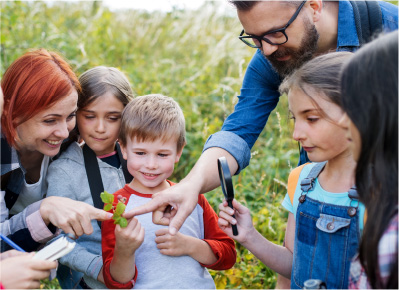How Art Therapy Heals and Empowers Marginalized Youth
Publish Date: June 27, 2025 0:00
Art therapy isn’t just about splashing paint on a canvas—it’s about unlocking emotional healing and reclaiming lost narratives. For marginalized youth, creative expression can be a lifeline in an often-challenging world. Before you roll your eyes at yet another “healing through art” claim, consider this: art therapy for youth has proven benefits that tackle trauma head-on while empowering individuals to write their own stories. From boosting self-esteem to inspiring hope, art therapy offers a compelling toolkit for emotional and psychological transformation.
In today’s post, we dive deep into the benefits of creative expression, answer burning questions such as “What is art therapy and how does it benefit youth emotional healing?” and “How can creative expression help marginalized youth cope with trauma?” We’ll share real-life case studies, examine art therapy’s community impact, and highlight how Believe in Me is partnering with professionals to create safe spaces for transformative workshops.
Get ready to explore a topic that is as vibrant and layered as the canvases our youth create, and find out how art is making a significant difference in their lives.
Spoiler: If you’re a counselor, art therapist, or nonprofit leader reading this, you might want to partner up. We’re actively looking to collaborate with local art therapists for upcoming workshops, so stay tuned!
Overview: Empowering Youth Through Art Therapy
Art therapy for youth goes beyond simply drawing or painting—it offers a modality for self-expression that can heal psychological wounds. The practice combines traditional therapy and creative process to help individuals explore their emotions, develop self-awareness, and achieve personal growth. For marginalized youth who often experience societal and systemic challenges, art therapy can be an accessible outlet to process trauma and rediscover hope.
Through guided sessions, youth are encouraged to express themselves freely, turning emotional turmoil into artistic expression. This creative process not only fosters mental healing but also equips young people with skills that enhance communication, problem-solving, and resilience. In communities where mental health resources are scarce, these art-based interventions have been pivotal in fostering healing and nurturing self-worth.
Organizations like Believe in Me are on the frontline of this movement, ensuring that marginalized youth have access to the therapeutic benefits of art. By facilitating partnerships and organizing community workshops, Believe in Me links the transformative power of art therapy with those who need it most.
Frequently Asked Questions
- What is art therapy and how does it help with youth emotional healing?
Art therapy is a therapeutic practice grounded in creative expression that enables youth to process trauma, build emotional strength, and nurture mental well-being. It combines art with psychology to offer an alternative avenue for healing. - How can creative expression help marginalized youth cope with trauma?
Creative expression provides a safe space for marginalized youth to explore and articulate their feelings. Through art, they are empowered to transform pain into expression, paving the way for emotional recovery and self-empowerment. - What are the benefits of art therapy for youth?
Benefits include improved emotional regulation, enhanced self-esteem, reduced anxiety, better communication skills, and a renewed sense of identity and purpose. - How do community programs incorporate art therapy for marginalized youth?
Programs often host regular art therapy workshops, offer both individual and group sessions, collaborate with licensed art therapists, and integrate creative expression into broader mental health and community empowerment initiatives.
Case Studies of Successful Art Therapy Programs
Real-life examples underscore how art therapy for youth can spark remarkable emotional healing. Let’s look at two compelling case studies that illustrate the impact of creative expression on marginalized youth.
Case Study 1: Reclaiming Identity Through Community Murals
In a bustling urban neighborhood, a unique art therapy project was launched to address the psychological scars left by community violence and systemic neglect. A group of local art therapists, in partnership with community leaders and organizations like Believe in Me, facilitated a mural project that allowed youth to portray their identities and experiences on public walls. The process was cathartic, as young participants transformed feelings of hopelessness into vibrant public art that celebrated their resilience.
One participant, Malik, initially struggled with anxiety and feelings of isolation. Through the project, he found a voice, expressing his fears and dreams through striking visuals. The mural not only beautified a neglected neighborhood corner but also became a powerful symbol of collective healing and pride. Through regular art therapy sessions, Malik and his peers learned that creative expression can be a formidable tool against trauma and emotional distress.
Case Study 2: Healing Hearts with Expressive Workshops
Another successful initiative was the “Healing Hearts Workshop” launched in a semi-rural community with limited access to traditional mental health services. This program, organized by local nonprofits in collaboration with certified art therapists, provided safe spaces where marginalized youth could explore their emotions through creative projects such as painting, collage, and sculpture.
One memorable story is that of Jenna, a young girl who used her art to navigate the complexities of grief and loss. Her vibrant sketches gradually transformed into a series of expressive paintings that conveyed hope and recovery. The success of these workshops was not only evident in the artwork but also in the improved emotional well-being of participants. This initiative reinforces the notion that when provided with creative outlets, even the most vulnerable youth can find solace and strength.
The Role of Art Therapy in the Community
Beyond individual healing, art therapy plays a pivotal role in fostering community well-being. By giving marginalized youth a platform to share their stories and heal together, communities can begin to address deep-rooted issues of trauma and social disconnection.
Community art therapy programs serve as a bridge between troubled pasts and hopeful futures. They reduce stigma associated with mental health, promote empathy among community members, and lay the groundwork for collective transformation. As youth find their voices through art, entire communities benefit from the ripple effects of healing and unity.
Furthermore, studies from industry leaders such as the American Art Therapy Association and the National Endowment for the Arts demonstrate that creative practices consistently yield improved mental health outcomes. Chicago-style citations support these findings: American Art Therapy Association (2023) and National Endowment for the Arts (2023).
Actionable Ways to Get Involved
Ready to harness the power of art therapy for youth emotional healing? Whether you’re a counselor, art therapist, or nonprofit leader, you can be a catalyst for change in your community. Here’s how:
- Partner with Local Organizations: Connect with initiatives like Believe in Me and other community centers to support art therapy programs. Collaboration is key to reaching marginalized youth.
- Volunteer Your Expertise: If you are a certified art therapist or a counselor, consider offering workshops. Your expertise can guide youth in discovering the healing potential of creative expression.
- Advocate for Creative Expression: Use your platform to highlight the benefits of art therapy in mental health forums, educational institutions, and community meetings.
- Invest in Art Therapy Programs: Financial support can help in acquiring supplies, hiring professionals, and organizing community-wide sessions that provide lasting benefits.
- Host Community Art Events: Organize art fairs or exhibitions that allow youth to showcase their work. This not only validates their experiences but also inspires others.
These actionable steps empower you to drive the movement towards better mental health for marginalized youth. Remember, every brushstroke contributes to a larger mosaic of healing and hope.
Conclusion: A Canvas of Hope and Healing
Art therapy for youth isn’t just another trend—it’s a transformative approach that helps marginalized youth heal, grow, and reclaim their narratives. Through creative expression, young individuals can overcome trauma, boost their confidence, and pave the way for future success.
From community murals that reclaim public spaces to intimate expressive workshops, the benefits of art therapy for youth are evident and profound. With organizations like Believe in Me championing these initiatives, the path towards emotional healing is being paved with innovative, creative, and empowering strategies.
Now is the time for counselors, art therapists, and nonprofit leaders to join forces. The opportunity to partner with local art therapists and offer healing workshops is at hand. Embrace the creativity, advocate for mental health, and be the change your community needs. Together, we can paint a brighter, more hopeful future for our youth.
Citations: American Art Therapy Association. (2023). American Art Therapy Association. https://www.arttherapy.org/; National Endowment for the Arts. (2023). National Endowment for the Arts. https://arts.gov/.
Get to know more about Believe in Me and Help a Kid Today
References
American Art Therapy Association (2023). American Art Therapy Association. https://www.arttherapy.org/; National Endowment for the Arts (2023). National Endowment for the Arts. https://arts.gov/.






